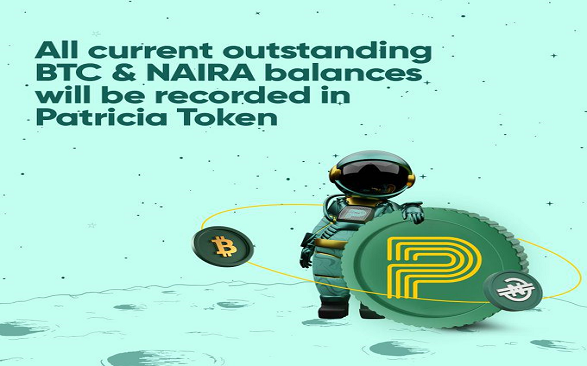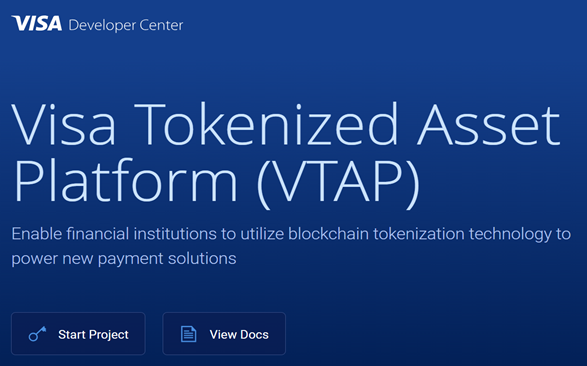Edward Aziegbe
Days after Patricia crypto exchange announced the introduction of its Patricia Tokens, many of its users remain distrusting, troubled, and unsatisfied. While Patricia explain tire, users continue to demand evidence. In other words, users want their money back, not some tokens. As far as these disgruntled users are concerned, the Patricia Tokens are out of thin air. They want the real thing: their bitcoin (BTC), Nigerian Naira (NGN), and USDT deposits. And they want it now.
On Friday 25 August 2023, Hanu Fejiro Agbodje, Founder & CEO of Patricia crypto exchange, dropped more explanations via his Twitter handle. He maintained that Patricia’s earlier announcement of Patricia Token “was largely misunderstood”. This, he said, “led to social media being awash with a lot of narratives and claims about Patricia”. Titled ‘Understanding Patricia Tokens – Our Commitment To Our Users, Community and Stakeholders’, the Patricia founder expressed hope that Patricia’s latest update would help “clarify this narrative by shedding light on what Patricia Token is and its intended purpose”.
Patricia Token is not a stablecoin, but a debt token, Hanu clarifies.
Contrary to earlier reports, Hanu emphasized that “Patricia Token is not a stable coin but a debt token, issued to customers to manage *users* debt”. Then all customers’ funds would be accounted for 1:1, “pegged to a stable coin, USDT”.
Patricia “would be redeeming these debt tokens from [its] customers monthly”, Hanu explained.
To win users’ trust and confidence in Patricia Tokens, he cites Bitfiniex Token as a reliable example.
In an apparent attempt to reassure Patricia users and other members of the public that Patricia Tokens was not some scam or questionable token, Hanu mentioned that debt tokens were “first introduced by Bitfiniex, now the sixth largest crypto-exchange when they lost $72m in 2016”.
According to Hanu, Bitfiniex issued debt tokens to all users, and it took Bitfiniex 11 months to fully repay their customers.
Read also: Patricia crypto exchange suspension of withdrawals after hacking incident raises concerns.
Bitfiniex’s debt token: Let’s go memory lane to 2016.
Back in 2016, Bitfiniex was the world’s largest platform for trading digital currencies such as BTC, ether (ETC), and litecoin. Precisely 2 August 2016, Bitfiniex suffered a hack. The hackers stole 119,756 bitcoins. This led to Bitfiniex losing $72 million.
At that time, it was the second-largest cryptocurrency exchange breach ever in U.S dollar terms.
Read also: The Five Biggest Crypto Hacks in History
In order to compensate their users, Bitfiniex announced that they would issue tokens of credit to each affected user. The tokens of credit ensures that users would only lose over 36 percent of the assets they had on the platform. The tokens were “Recovery Rights Tokens” called BFX. Essentially, BFX was IOU.
Bitfiniex said upon logging into the platform, users would see that they have experienced a generalized loss percentage of 36.067 percent. Also, Bitfiniex said it would give all affected users a BFX token. BFX Token can be redeemed by the exchange or for shares in iFinex, the exchange’s parent company, it said.
But similar to the introduction of Patricia Tokens, Bitfiniex faced several challenges after announcing the launch of BFX. First, BFX was not immediately tradable, understandably frustrating its users. Second, secondary markets started trading BFX immediately for the low price of two and a half cents on the dollar at first. Third, there was the constant story in the community that BFX was a scam to buy more time and not compensate or restitute customers.
Consequently, on 1 September 2016, Bitfiniex bought back the first 1.1% of BFX outstanding. But Bitfiniex didn’t stop there. Determined to regain trust amongst its users and the community, Bitfiniex focused on improving its volume. It achieved this by adding a few new trading pairs, enabling faster withdrawals, and creating an OTC trading desk for larger trades. As a result, Bitfiniex experienced “a dramatic uptick in equity conversions” and “record operating results in March”, and “making the decision to reduce [Bitfiniex] reserves in favor of this opportunity”. This is according to a Bitcoin.com report in 2017.
Bitfiniex was finally out of debt. Evidence, finally. No more tiring explanations.
On 3 April 2017 at 8PM UST, Bitfinex stopped all trading in BFX and started allowing users to cash out their full value of $1 per BFX token. This represented the “final redemption of BFX tokens”. In Bitfiniex’s words:
We are deeply grateful for the patience and trust of our customers and shareholders as we worked towards—and have achieved—full recovery in just eight months. Without the community’s support, Bitfinex could have easily become a footnote in the history of the digital token revolution, instead of a leader and trend-setter. Thank you.
Read also: Patricia crypto exchange breach: Industry stakeholders react.
Beyond a debt token, Patricia Token will serve as a utility token and an investment token in the Patricia ecosystem.
First, beyond being used as an IOU token, Patricia wishes to launch the same Patricia Token as its ecosystem token. This is after Patricia has made all users whole. And this is based on the assumption of trust users would have in Patricia Tokens as a debt management vehicle. At the time of writing this report, the level of trust in Patricia Tokens remains very low, if the reactions from its user community on Twitter is anything to go by. This represents an herculean task for Patricia throughout this fund repayment period.
Second, holders of Patricia Tokens will be immediately eligible for investment opportunities on the Patricia platform. According to the Patricia Token whitepaper, the “system allows users the autonomy to designate the proportion of their Patricia Tokens they wish to commit to the investment”. However, only Patricia Tokens not allocated to investment will “remain fluid and can be efficiently converted to USDT”.
Read also: Patricia crypto-exchange hackers caught; to be arraigned, announces CEO, Hanu Agbodje
To make Patricia Tokens really work, Patricia has a lot of work trust to build.
Noticeably, there is a huge trust deficit in the Patricia user community. While some users have been suspicious since Patricia suspended withdrawals months before it announced that it was hacked, others simply think Patricia is only buying time. Worse still, a number of others think this is yet another scam loading.
Concerning Patricia Tokens, Hanu shared the Patricia Token Whitepaper (Technical concept) in a Twitter thread on 25 August. Titled ‘Restoring Trust, Ensuring Asset Recovery’, the Patricia Token white paper is designed to offer Patricia users “a clear understanding of Patricia Token, its benefits and also answer possible questions our users have about the token”. It covers token creation, distribution, mechanics, benefits, and transparency measures implemented by Patricia Technologies.
Simply put, Patricia Token “is a symbol of promise by Patricia Technologies to pay holders 1 USDT for each Patricia Token in the future”.
Patricia Token is an IOU, not a stablecoin.
For every BTC, NGN, and USD asset Patricia owes its users, its equivalent in Patricia Token will be issued. One Patricia Token equals 1 USDT. Here, Patricia does not claim that it has 1 USDT for each Patricia Token. No. Patricia is saying: Just hold our token for now trusting that it is the equivalent of 1 dollar. When we secure the dollars, we promise to pay you what we owe you. The conversion rate is based on the respective assets’ USD value as of 29 April 2023.
But without users’ trust and confidence in Patricia, Patricia Tokens face the risk of failing. If Patricia—like Bitfiniex did with BFX tokens—is able to pull it off, this will help Patricia regain the waning trust in the community. If otherwise, Patricia—and indeed the crypto industry generally—face the potential danger of yet another reputational damage.
Without doubt, it has been difficult for many observers to understand why Patricia would become one of the biggest sponsors of the popular reality TV show, Big Brother Nigeria (BBN), only to become financially distressed shortly after. This appears to have greatly influenced many observers’ judgment of Patricia. Olumide Adesina, financial analyst, recently asked in a tweet on 25 August 2023:
In the coming weeks, Patricia has its work cut out for it.
Read also: Patricia crypto exchange offers ‘Patricia Tokens’ to replace users’ bitcoin and naira assets.
Discover more from Crypto Asset Buyer
Subscribe to get the latest posts sent to your email.



